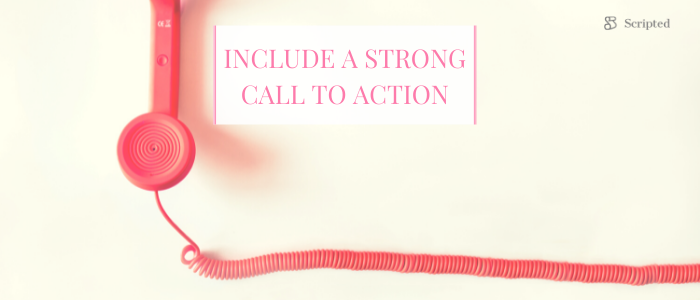- Blog Home
- Social Media Marketing
- Ciara Antolini
- How Do I Write Social Media Posts?
How Do I Write Social Media Posts?

How do you become a writer who effortlessly creates compelling content for social media?
We know social media can be hard. Just when you get the hang of a platform like Instagram, Twitter, or Facebook, they change their algorithm, and social media strategy becomes a totally new ballgame—not to mention the constant need for creativity and new content ideas.
But don’t worry; we are here to help. Here are some writing tips for creating social media posts that will grow your social media accounts, your audience, and your business.
Keep Your Posts Short and Sweet
![]()
People want social media content they can digest quickly, so keep your thoughts brief. It’s a myth that social media posts have to be long.
One of our top writer tips is that the best social media content is short and sweet. That means just a few carefully chosen sentences are usually all you need.
Do Your Research
![]()
When you’re trying to come up with social media posts, it's hard to know exactly what people want to see. But social media is all about connecting directly with the customer and creating genuine relationships with them, so talk to your audience. What are their burning questions? What problems are they trying to solve right now? What feedback can they give about your product or business?
You can even use social media features to conduct the research. For example, Instagram Stories has built-in functions to ask your audience questions, like the Questions sticker and the Poll sticker. You can also create polls on Facebook, Twitter, and LinkedIn.
Speak the Language
![]()
Copywriting is a skill that has a lot more to do with listening than writing. The best writers find out what is bothering people and how they describe the problem and their feelings about it in their own words. When you talk about problems in people's own words, you get into their heads and make it easy for them to engage with your content.
You also need to use the words that people use to describe themselves. You might think of your target audience as Baby Boomers or people in their 60s and 70s, but they describe themselves as grandparents or retirees.
Avoid Cliches
![]()
Instead of writing social media posts using the same boring cliches as everyone else, try to really get into the mind of the social media user. Be very clear and specific with your words.
It's also important to use a conversational tone. Make posts that sound like you are talking to your customers. Be authentic and try to make a personal connection with each social media post you publish.
Pick Your Social Media Platform
![]()
There are so many social media tools and social networks out there. It’s tempting to try them all, but that can get confusing and unmanageable. The best platform often varies by industry. However, for now, focus on where your customer hangs out the most and which social networks bring you the most traffic.
It's more important to be consistent on one platform rather than dabble on a few different platforms.
Plan your social media strategy based on the return you will get from it. Once you have tried a few platforms, calculate your ROI to see which social networks are worth maintaining.
Use Curiosity
![]()
People like to be surprised. Curiosity is one of social media’s most powerful social triggers, and social triggers are the engine of social media traffic.
Curiosity gets people to click on your posts, share them with their friends, and come back for more. It will make you stand out from the crowd in a crowded market.
Ways to use curiosity include:
- Building up to the launch of something new with teaser images that only show part of the product
- Using cliffhangers in your writing to make social media followers want to know what happens
- Creating a social media contest where the prizes are revealed over time
Use Social Proof
![]()
It’s in our nature to want to be liked by other people and like things that other people like. It stems from our cave dweller days when being accepted as part of the tribe was the key to survival.
This drive to belong can be seen in the way we dress, the brands of cars we drive, or even what type of TV shows we watch.
It's particularly relevant for a business; people feel comfortable buying into a brand because there is safety in numbers. Social proof also helps overcome the natural skepticism people feel toward a company—or even toward their ability to change something about themselves.
A business can demonstrate social proof in the following ways:
- A large number of social media followers
- Sharing buttons on your website or blog that tell people how many times content has been shared and spread throughout social networks
- A seal or badge on your site
- Testimonials and case studies
- A list of high-profile companies or individuals your business has worked with
Create a Talk Trigger
The book Talk Triggers: The Complete Guide to Creating Customers with Word of Mouth reveals that companies who differentiate themselves with unique operational differentiators have no problem generating word-of-mouth referrals. Examples the authors use are:
- The Cheesecake Factory's incredibly long menu
- Getting a warm chocolate chip cookie when you check-in at a DoubleTree Hotel
Apply this concept to social media by creating unique conversation starters that people can't resist talking about and sharing.
Examples of social media talk triggers include:
- Offering social media users exclusive sneak peeks or behind-the-scenes looks at what's going on
- Creating social media content that can be made into memes and shared with friends
- Offering social media users a unique "perk" or benefit for signing up for your social networks
Incorporate Hashtags
Hashtags are especially relevant on Twitter and Instagram as people often use them to search for topics. It's a good idea to incorporate hashtags because they will give you a broader reach with less effort.
While hashtags seem simple enough to use, using them only makes a difference in your marketing when it's done the right way. Here are some general tips:
- Keep hashtags short and memorable rather than trying to be too clever and creative. If no one else has used the hashtag before, then it's unlikely that anyone will search for it.
- Use hashtags that are detailed and specific. Hashtags that are too broad and too popular will probably get lost in a sea of unrelated content.
- Hashtags are not just a promotion tool; they can also help you research your content strategy.
Include a Strong Call to Action
The call to action (CTA) is the social media post's primary job. The CTA should clearly explain what you want readers to do.
The social channel will also dictate when and where you should place this call to action so that it can convert the most readers into customers. Each social media platform is different, but here are some examples of common CTAs:
- "Like or comment on this post."
- "Share with your friends."
- "Share your thoughts below!"
- "Follow me for more content."
Whatever call to action you choose, just make sure that it's specific and relevant for the social network you’re using. If you're using social media to promote your blog posts, ask your readers to view the post and share it.
Plan Your Content
Planning social media content is just as vital as planning anything else in your business. It's the only way to ensure all your posts will fit the goals of your company.
Tools that help you schedule posts and monitor your progress include:
Buffer
Buffer is a social media scheduling and analytics tool that works with platforms like Twitter, Facebook, LinkedIn, and Instagram.
It allows users to schedule social media posts across multiple social platforms ahead of time.
Users can choose from several social media templates, and social networks are displayed at the top so it's easy to see what's being posted where.
Sprout Social
Similar to Buffer, Sprout Social is a social media marketing tool that allows businesses to schedule social media posts across multiple social platforms.
Hire a Scripted Writer
It's not always possible to keep up with writing social media content and running your business. That's where Scripted can help.
You need professional social media posts to gain the trust of new customers. However, finding talented writers is sometimes difficult.
Scripted offers professional writers who will create engaging social content for your business at affordable rates. Our team has experience with all types of industries, and we're ready to help you succeed on social media today.
What makes Scripted different from other platforms? We only accept the top 2% of writing applicants. The quality of social media content we produce is second to none.
Published by Ciara Antolini on Tuesday, October 26, 2021 in Social Media Marketing, Content, Social Media, Social Media Marketing.




